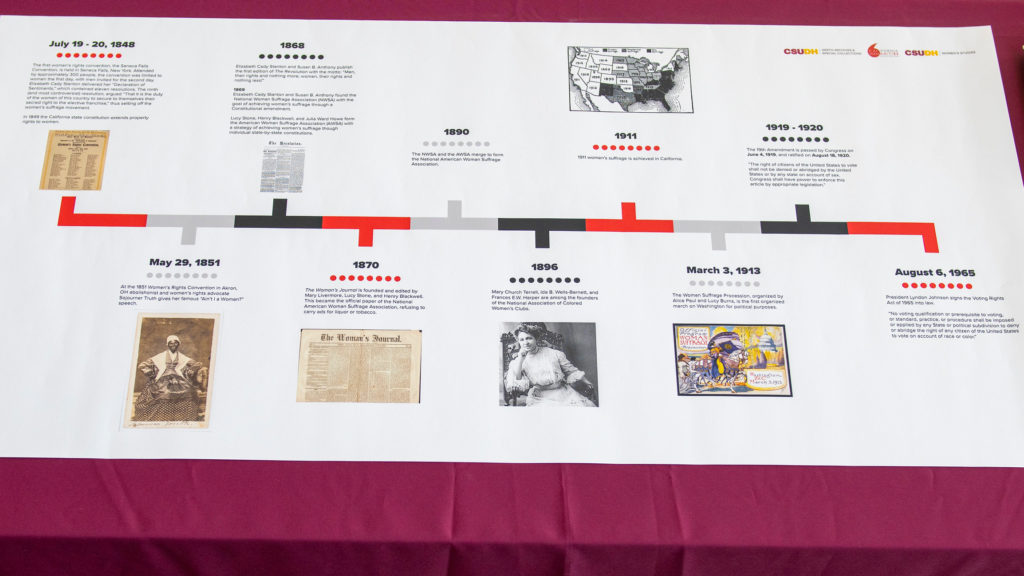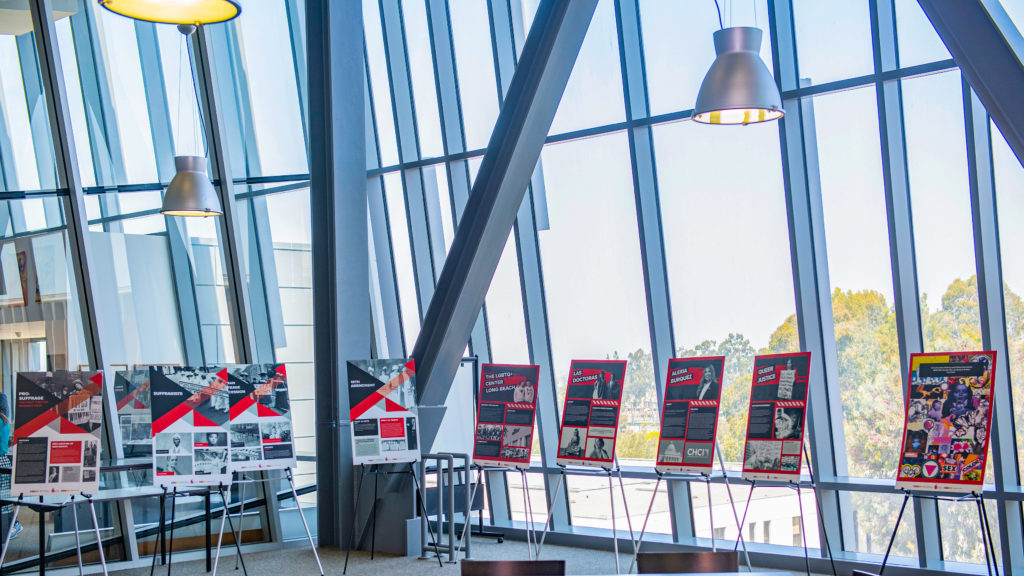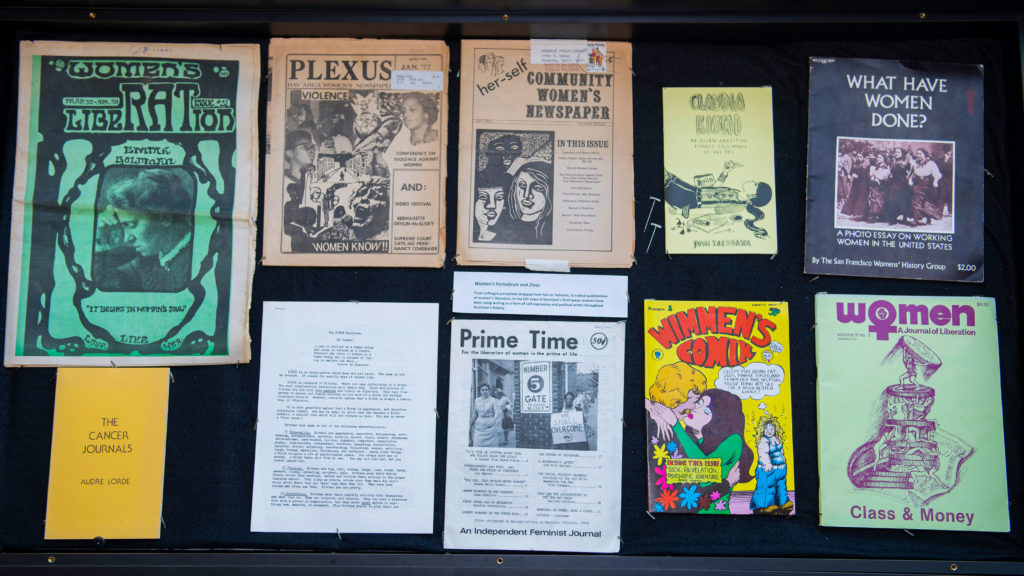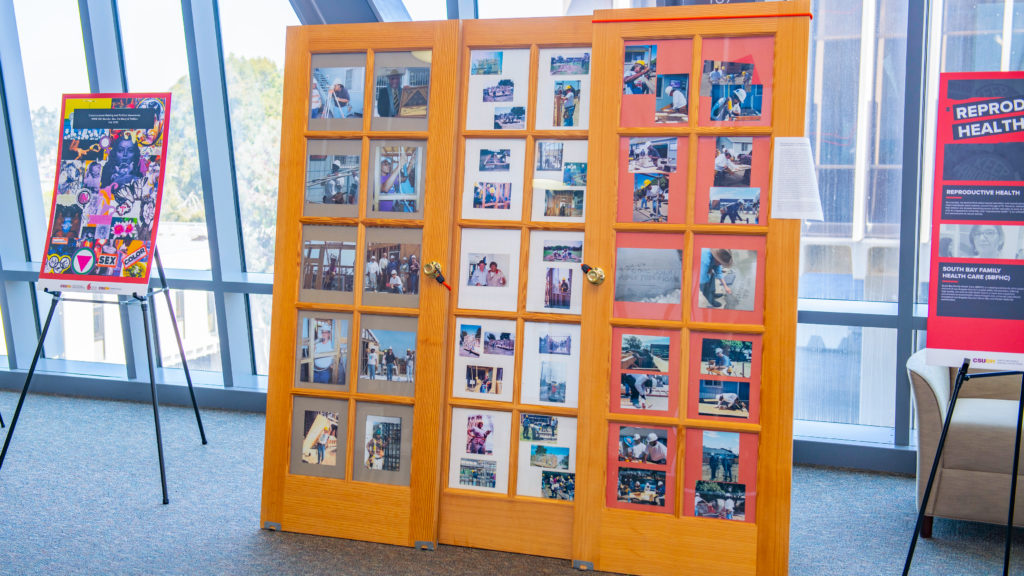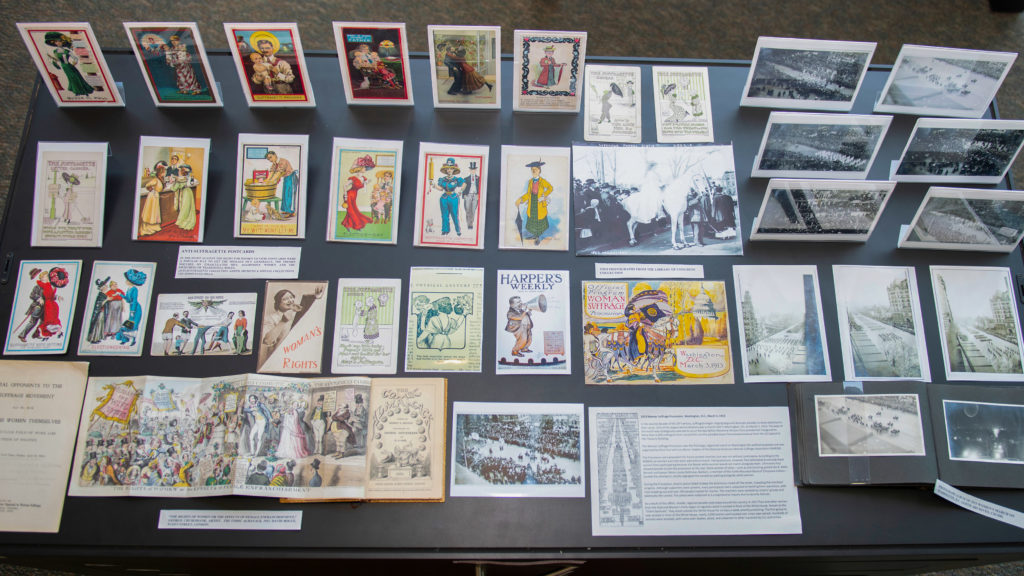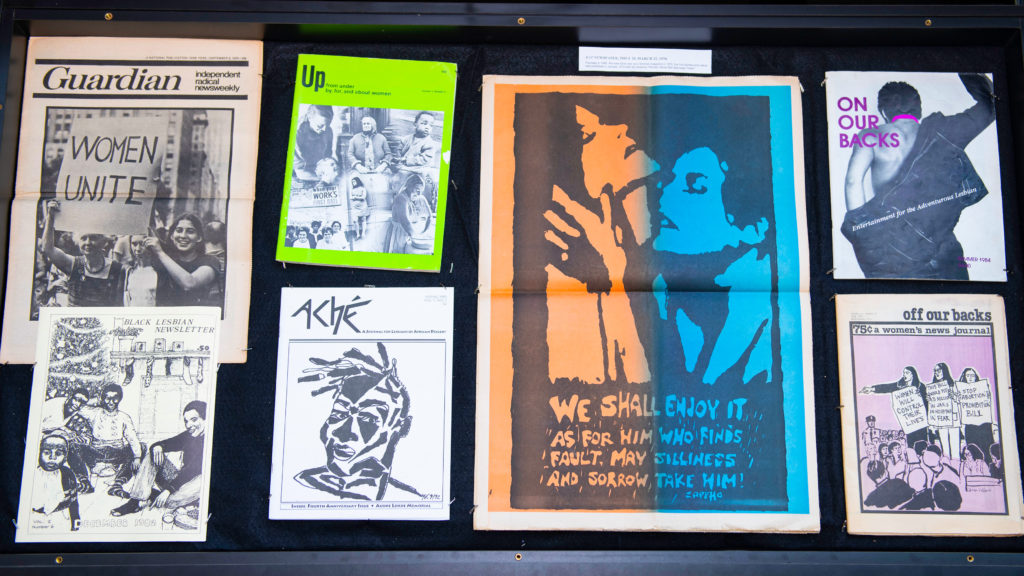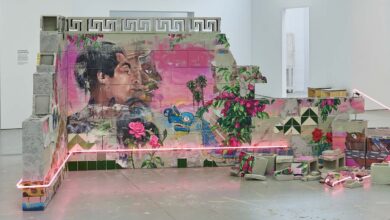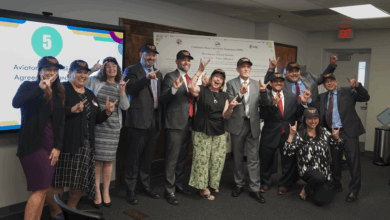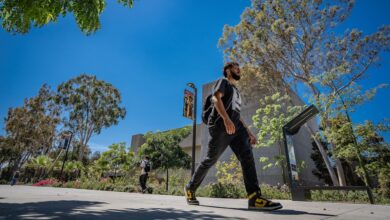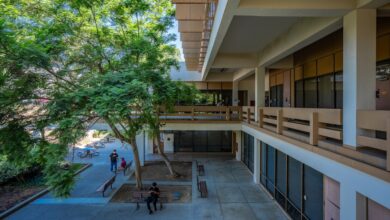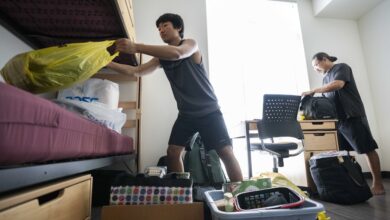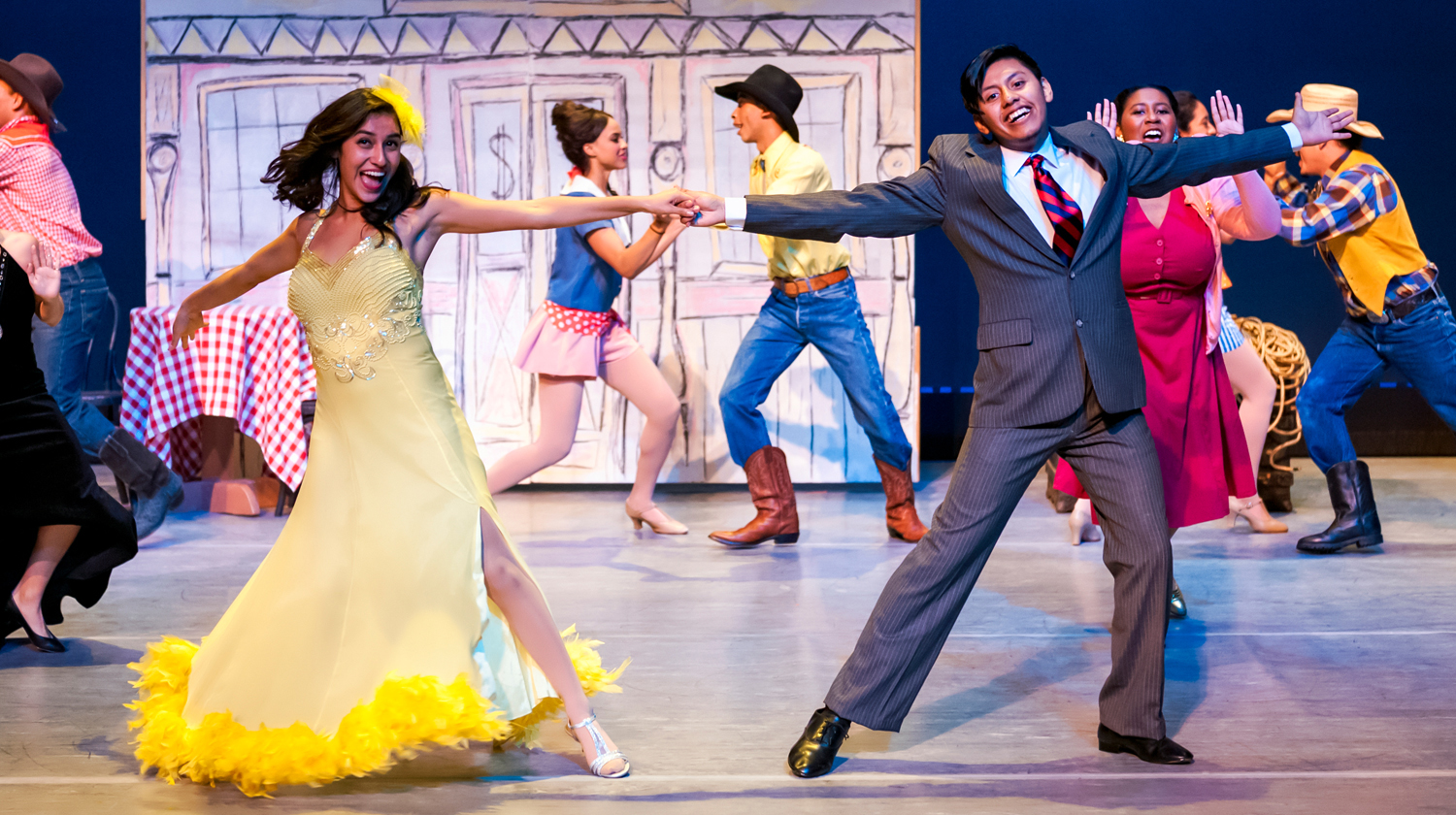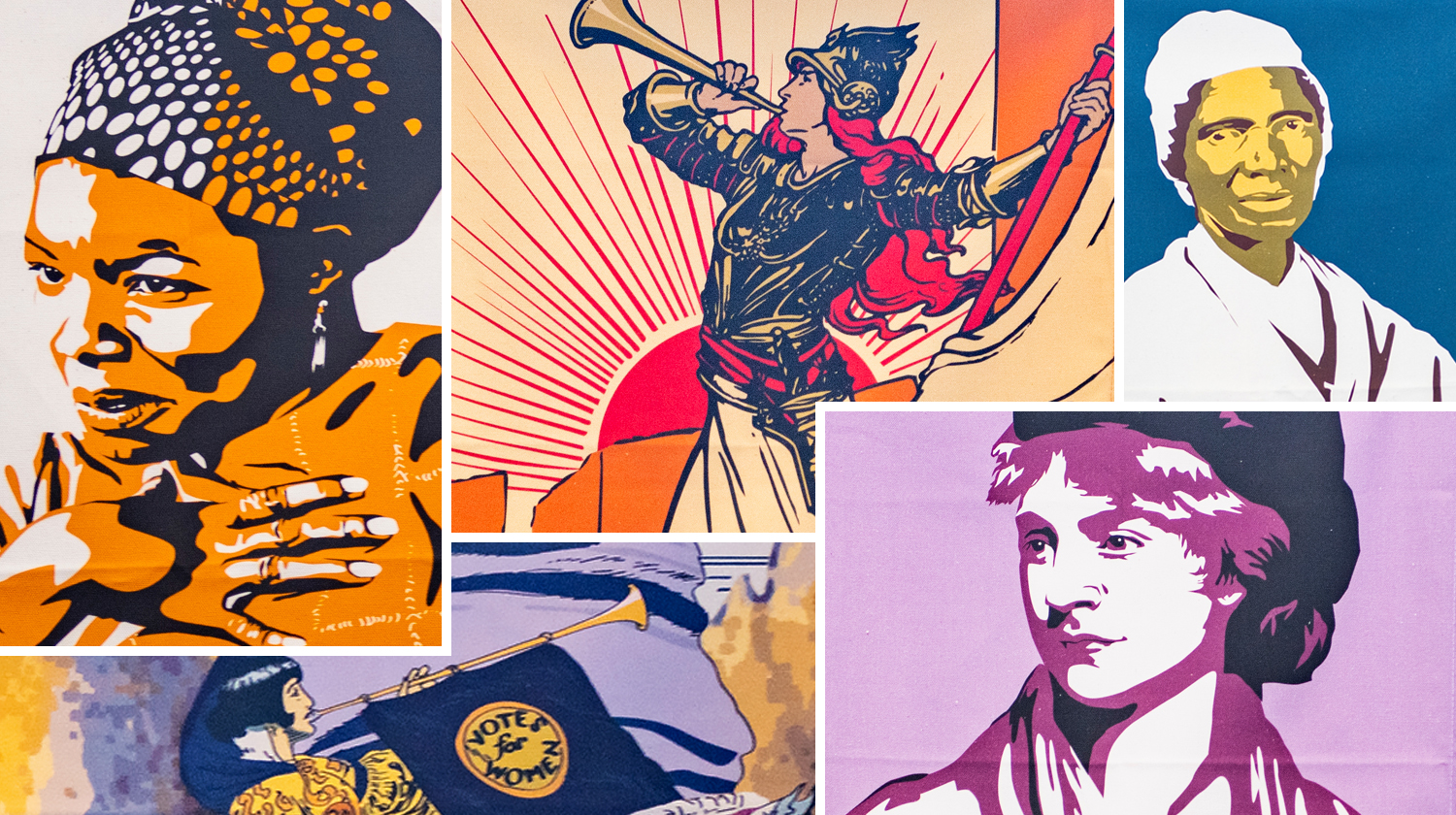
The passage and ratification of the 19th Amendment in 1920 ended a nearly century-long battle for the right for women to vote. In recognition of those early activists and reformers, and those carrying the torch today, CSUDH students have honored their lives and legacy with the online exhibition “100 Years of the Women’s Vote.”

Presented by the Donald R. & Beverly J. Gerth Archives and Special Collections and the Women’s Studies Program at California State University, Dominguez Hills (CSUDH) – with funding from a $5,000 California Humanities grant – the exhibit has been physically on display since early spring 2020, but has been unavailable for public viewing due to the COVID-19 pandemic. However, after much work during the past couple of months, the artifacts, research, and interviews have been re-imagined as a virtual exhibit and can be viewed at https://scalar.usc.edu/works/100-years-of-the-womens-vote/index.
The research, design, and curation of the exhibit was carried out by students in CSUDH Associate Professor of Women’s Studies Jenn Brandt’s fall 2019 “Feminist Principles” class, where they studied women’s movements on a local, national, and global level.
“As we approach this historic anniversary, it is important to not only remember the history of women’s suffrage, but to place it in the context of ongoing activism for social, economic, and political equity for all individuals, regardless of gender, race, or sexual orientation,” said Brandt. “I wanted to draw students into this history so that they could see the relevance that it holds for their lives today.
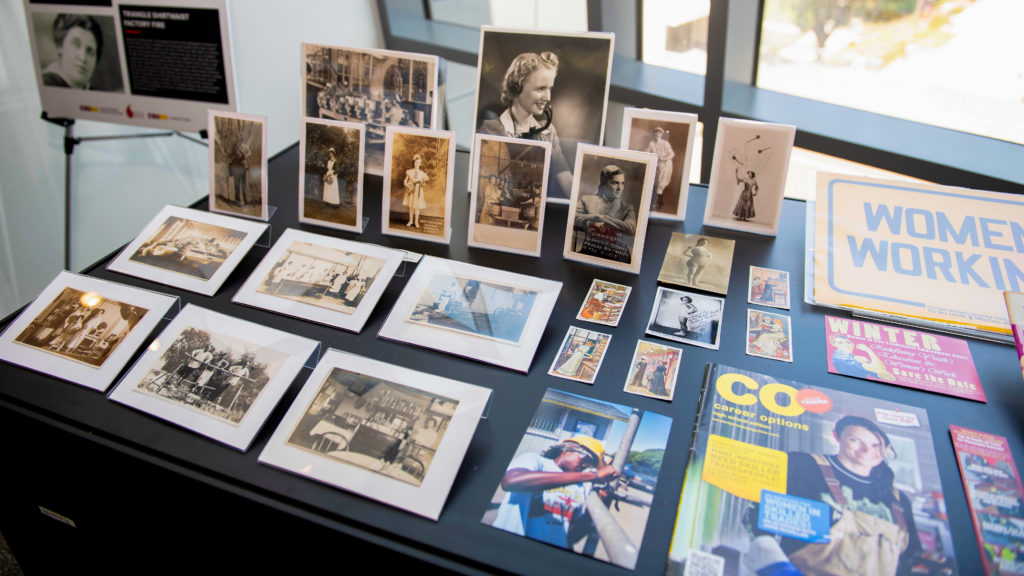
“The students worked directly with archive staff to find the right literature, images, and other materials,” Brandt continued. “This project is not only a great way to educate everyone about the 19th Amendment and showcase our students’ work, but also teach them how to use an archive effectively and discover creative ways to exhibit all the cool things they can do as women’s studies majors.”
Working alone and in groups, the students collected information, materials, and images related to the Suffrage Movement, a grassroots movement that began in the early 1800s to advocate for women’s right to vote and broad-based economic and political equality and participation. The more contemporary materials and local history for the exhibit includes women’s magazines from the 1960s through the 1980s that were published in California.
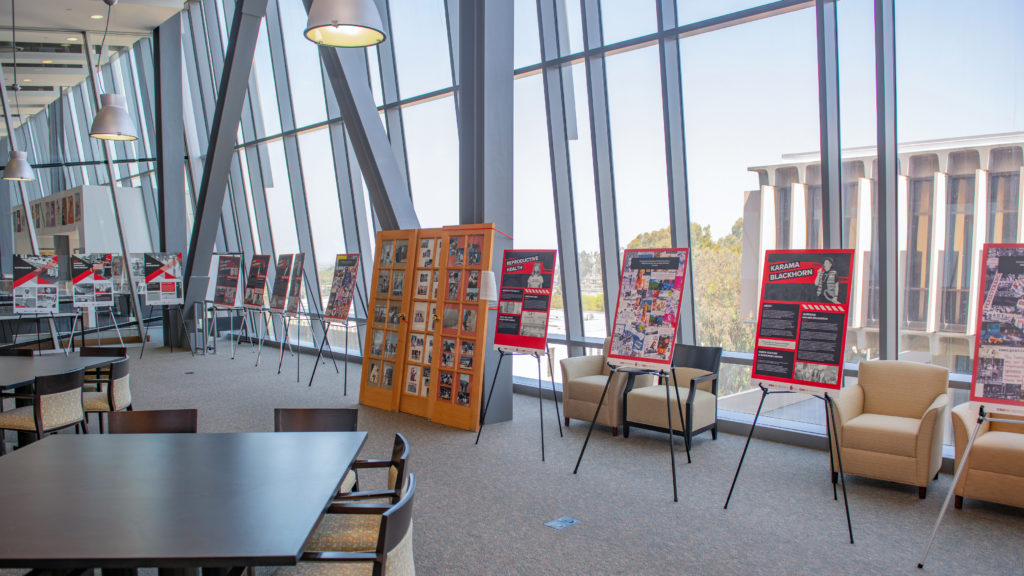
For the posters, students researched topics of their choice, such as political moments, reproductive justice, and domestic abuse and the Violence Against Women Act of 1992. Some conducted interviews with female leaders making a difference in the region and at CSUDH, such as Josephine Lara, a community health outreach and marketing assistant for the South Bay Family Health Care Center.
Also featured were “Las Doctoras,” a contemporary feminist podcast hosted by Renee Lemus and Cristina Rose Smith, a faculty member in CSUDH’s Women’s Studies Program. Karama Blackhorn, coordinator of the university’s Queer Culture & Resource Center, was also interviewed.
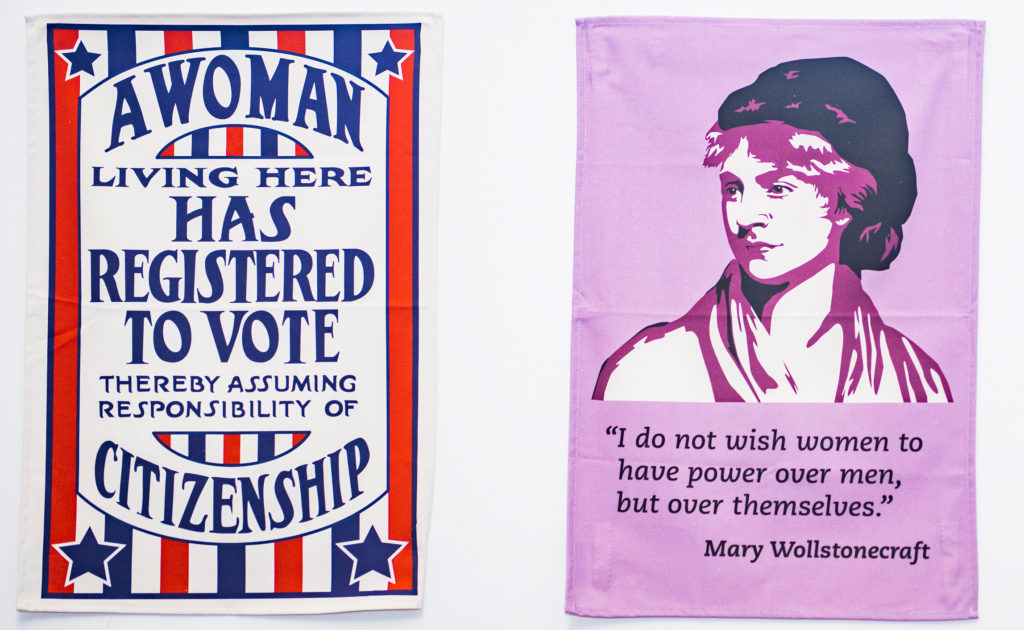
“It was important for the exhibit to create a connection between the community and campus – to showcase ‘everyday people’ who are doing good work,” Brandt said. “The student who interviewed Karama Blackhorn was interested in queer rights and advocacy because there are still a number of states in this country where there is discrimination against the LGBTQIA+ community. Another poster focuses on homelessness. There is no real solution to help the homeless yet, so this work shows the need to start thinking more about advocacy and activism around the issue.”
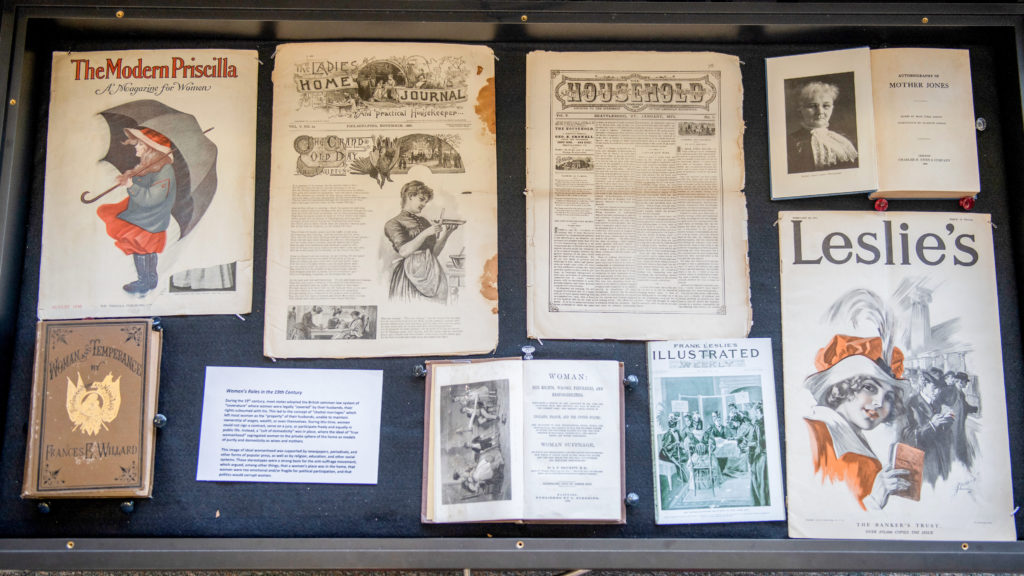
The graphic designs for the physical display were created by Itzel Marin, who graduated in the spring with a bachelor’s degree in graphic design and a minor in women’s studies. Students in Women’s Studies Lecturer Christina Rose Smith’s “Gender, Sex, the Body and Politics” course contributed to the creation of the posters on contemporary women’s issues, as well as art images for the zine that was created to accompany the exhibit.
Brandt added, “This exhibit has been a great way for my students, and the public, to get more engaged in these important issues, especially when you think about what’s going on in our country right now. The call for social and political action is more important than ever.”
